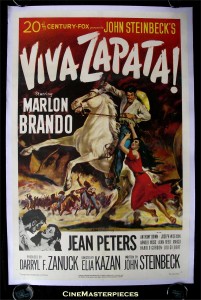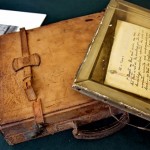“Ed Head” alert: an update on the Steinbeck auction
Friday, June 25th, 2010Just got an update from Joe Wible of the Hopkins Marine Station Library about the mysterious sale of Ed Ricketts’s briefcase at the NYC Steinbeck auction earlier this week (I wrote about it here and here):
I did hear today from someone who knows the person who made the winning bid for the Ricketts briefcase and manuscripts. It did go to a private collector from southern California and is not likely to end up in a library or museum. Bummer.
Now I understand why a marine librarian would be interested in Ricketts — the only scientist to have 15 animal species and a nightclub named after him (I’ve never read Cannery Row):
“‘Ricketts is like a cult figure,’ says Joseph Taylor, professor of environmental history at Simon Fraser University in Burnaby, B.C. Of all the scientists who ran marine research stations along the Pacific Coast, Taylor says, ‘he was by far the most colorful.'”
The quote is from a five-year-old San Francisco Chronicle article on Ricketts here. I finally googled Ricketts, just as Wible told me to do — and found this description:
“He is the Jerry Garcia of American science — a beer-drinking, bearded guru who ignored the social and scientific orthodoxies of his time, a progenitor of the counterculture, an enigmatic ecologist whose pioneering work was initially rejected by the scientific establishment.”












